Cosmology at Sea and Maritime Archaeology
by Christer Westerdahl
|
Cognition & cognitive – during later years archaeologists have started to refer to cognitive aspects in their discipline. By cognitive is here meant the way people in the past have thought about themselves in relation to their environment, their representations of this relationship, or, generally, their cognition. It is true that the source material of archaeology is of a material nature, but basically the ambition of all research of the humanities would presumably be to get as close as possible to the thoughts of people. An internationally well-known pioneer of archaeological theory, the Swede Mats Malmer, often talked – sometimes provocatively - about the need for archaeology to follow up the notion of making the spiritual life of ancient times the foremost and only task of archaeology. It is of course a dangerous illusion to believe that prehistoric man in any period has thought exactly like we do. To believe that would be to ignore all experience of how men have been shaped by their environment, by their adaptation to this environment and to other people. This goes for individuals as well as for the social ”thinking” of groups. But to be able to interpret the cognitive significance of artefacts or other remains of the past we find that a wide scope of knowledge must be brought together from archaeology and all other disciplines known to work with the cognitive world of humans. For example, archaeology is not in itself particularly well suited to take up the challenges inherent in rock art. Its own contribution would mainly be in the field of dating the objects depicted or the remains found in connection with the rock panels. Even the sub-discipline maritime archaeology has now started to get influences from this ambition. As to myself, I have always maintained that the task of maritime archaeology is to document and analyze maritime cultures of the past. Maritime culture then would be defined as the cultural manifestations shaped and exercised by groups living at the sea and getting their subsistence from the sea. It could be added, generally at great open waters. It is unlikely that the difference between the sea and the great lakes would be obvious in a cognitive sense anyway. However such an ambition introduces a slight problem of interpretation, since some people have probably lived at all times in the neighbourhood of these water without themselves being dependent on it in any way. It is thus possible to live with your back to the sea and facing the land. Om the other hand the opposite would be the rule almost everywhere. In this text, it will make no difference if the source material of archaeology is found underwater or on land. All remains are part of the maritime cultural landscape during every current period. The relevance of all sources will be judged according to their ability to reveal cognitive aspects of human existence. This text is an attempt to deliver something really new. To do so must mean an analysis of unconventional kinds of sources, which archaeologists may not even have touched in the past. CosmologyCosmology is a simpler kind of explanation of the world than myth and religion. It is based on contrasts and other great dividing lines in existence. This is why it can pass unscathed through time and space almost independent of time-bound ornamentation. One of its manifestations is the various doctrines of basic elements in the universe or the primeval or first element, which found its first expression where it was partly detached from religion, with the Pre-Socratic Greek philosophers (fire, water etc). Cosmology could be said to represent the magico-religious aspect of cognition. It is emotional and partly subconscious, it is quite plausible that it was not even formulated as such in the past. Its position is that of an illiterate” ideology” expressed by oral tradition, language and the application of all senses. To an illiterate tradition pictures like rock carvings is a prime form of exhibition. Cosmology is often covered by and hidden under more sophisticated religious representations. Religions proper have a much clearer social function and change relatively fast pari passu societal development. Their role is formulated by the upper classes and elites in society to motivate their own existence vis-a-vis the underdogs. In fact cosmology is often a counter-ideology to religion used by these underdogs. The cosmology and the kind of magic used by the underdogs to negotiate it is accordingly despised by the creators of such religious systems. In their eyes it is only superstition. I think that it is quite possible to sketch a picture of a cosmology (or part of it) for a long period of time. On the other hand I will maintain than prehistoric religions form a much greater challenge. They are much more sophisticated, thus difficult and ambiguous. In a certain sense they are the off-spring of literacy, partial or ”total.” In this case I will attempt only to indicate a few junctions of cosmology, magic and religion. What I am going to present as a model for explanation of cosmology at sea has taken many years to chisel out of an old torso, composed of several elements of maritime and other cultures (Westerdahl 1999, 2002a, 2002b, 2004, 2005, in prep.). Only last year I found what I would now audaciously propose as a definitive solution. At least when it comes to cosmology proper I am convinced myself that I am on the right track. My task is now rather to convince others. My own scepticism of success in this is mainly due to doubts of my own ability to explain to my auditorium the sheer scope of human forms of expression and their relevance to cosmology. After all, I did not understand it myself for many years, although entirely immersed in the subjects involved. This journey will pass over such disparate phenomena as words, names, pictures, objects, and animals or human beings as transferred forms or ”symbols”. Inanimate materials, like stone, water and their transformation by way of fire could also be partly relevant. The senses like sight, and perhaps even hearing and feeling, could be implicated. I had no idea from the start that this scope could possibly explain other controversial and enigmatic elements than the manifestations of a maritime culture. Taboo and noaTwo essental anthropological concepts taken from recent cultures in the South Pacific are taboo and noa. Taboo is what is forbidden. Noa is what is normal and what could replace that which is taboo, if needed. In this case taboo at sea is what represents land. Noa replaces it as not forbidden at sea. In our world this is simply known as superstition. It is well-known that fishermen have or rather have had a well-developed kind of superstition. Today it is believed that only old fishermen would believe in such ”nonsense.” Probably most of us also believe that superstition does not exist anymore. This is almost true, but only almost. And it does not only concern old fishermen. Likewise contrary to common expectations, it does neither only concern males, in fact. We, and some fishermen then, may meet this superstition as the notion that various things and behaviour bring fortune at sea and other things rather the reverse. Mostly the rules are negative. The best known taboo forbids women on board, but it is by no means the most important of these rules. And black colours should always be avoided in the boat. Or whistling at sea should never be done. You should never have clawed animals, like cat, dog etc. onboard (what about the ship´s cat and the ship´s dog?), not even mention them and others of their kind. That the parson or priest is even less welcome than women/ females. That you must not talk about or name women/ females or priests onboard. That it even means bad fortune to meet such individuals on the path to the boat, such as a priest, females, cats. Or that it is forbidden to use the same word or name, for example for these people, as you normally do. You have to use a noa expression, a `good name´ (Norw. godnemne), if you have to mention them anyway. You also have to use another (noa) place name for a conspicuous feature on land than you do when in land. Perhaps you would even know the obvious case of Bonden (The Farmer) which is often the noa name for several important sighting points in the North, such as Kullen of Skåne, S. Sweden. Even the boat and its implements are taboo, and the same goes for the various species of fish and the weather. Perhaps the last category is the last to survive.
The foremost international site of sailor´s baptism appears to have been Kullen, a dangerous rock at the entrance to the Sound (Öresund). This is Anthonis Goeteeris view from the sea in 1619. The noa name of the rock was Bonden, ”the Farmer,” (with other translations) Kullen thus being taboo. This name, Bonden, reappear at several other widely dispersed places to which could be ascribed similar ceremonies and seems to have marked land as opposed to the sea. When fully developed this system amounted to what was supposed to be a particular language at sea, a sjòmali, as it was known in the Faroes, or mainly as another vocabulary. in Shetland, called hafwords or luckywords, in Gotland skrocknamn. The latter means `names of superstition,´ which reveals an outside condescendent observer. But it was in fact not only another vocabulary, even grammar could be influenced. It may appear as a rather simple kind of superstition. Sceptics have always despised such primitive superstition, certainly even fishermen. And nowadays very few people follow such rules. If they do so they practice it in secrecy. Already in the 1960`s, when interviewing fishermen at lake Vänern, I met very little of it. In the 1970´s along the Norrland coast down to Norrtälje in Roslagen the appearance was the same. But this ”varnish” was in itself quite superficial. People were ashamed of showing openly what they believed in. Another important mechanism to hide such behaviour is the notion that the practice of magic loses its power to transform if it becomes known to outsiders and non-believers, in this case land-lubbers in particular (me!). In fact a lot of the old ideas were still alive, both taboos, noa names and other superstition. But only a very few were affected by these old cognitive patterns. On the other hand this group did not only contain oldsters, and, as has been already mentioned, not only males. A necessary condition seemed, however, to be a firm basis in a maritime environment, mostly fishing families and communities. Everybody would have had a father and/or grandfather who was a fisherman, at least part-time. Furthermore, the current forms of superstition were shared with quite a number of sailors. ”Det er tydeleg at fordomar hjå sjøfolk stort sett har vori dei same som hjå fiskarar” `It is obvious that prejudice among sailors have been the same as those of fishermen´ (Solheim 1940: 14). This was clear from some other of my interviews, being part of everyday maritime culture and its pattern of recruitment. The life cycle of an individual fisherman/ farmer often included a period at sea as a sailor and maybe as a pilot or pilot`s assistant in later years. And he accordingly bore the twin world of sea and land inside himself. This may still give the impression that only the fishermen`s world was affected. This is an oversimplified notion. Only a closer examination could reveal the actual scope. At first taboo was associated with land, the noa name with the sea. There was a clear-cut dividing line at the shore, and beyond it, by being onboard the boat or the ship. Everything associated with agrarian activities, the animals of the land, in particular the prestigious animals, such as the horse and the great predators, were taboo at sea. Thus not only the physical stay at sea or in the boat demonstrated the application of the dividing line, but it was applied with a clear theoretical consistency in all senses. The taboo could be seeing, gazing at, using, feeling and even hearing land phenomena. The pattern was in fact rather that of a consistent system of belief. Studies of literature on the subject revealed that the same kind of taboos were known from fishing cultures in the whole of the North Atlantic, like Newfoundland, but also Texas, the Malay peninsula and parts of South America (e.g. Guayana). Thus it appears that we have discovered that it is a universal form of superstition in fishing communities. Several authors have explained this form as a reasonably logical reaction to the dangers and hazards of fishing as a métier, as a profession. Magic would then give mental guarantees and assurances that nothing else could give. Subjectively the fisherman felt much safer if he applied age-old traditions rather than not. No harm done anyway, if it did not work as he thought or in fact did not work at all! This idea was often put forward by people I had interviewed, who confessed to have used such magical practices. Only superstition and only magic for the benefit of fishing?Was this pattern still only loose ends of superstition? Was it only the product of an adaptation to hazardous circumstances? At first the whole pattern had seemed to me rather uninteresting. After all my tasks during field work were very material, tangible, such as the wreck sites, the sea routes and the harbours and all that pertained to these categories. The complex of beliefs and its attendant behaviour appeared more or less as a kind of curiosity. Personally I only started to doubt my former assumptions, shared by so many other field workers, by observing the obvious consistency of the pattern and especially the scope of its remains. I was deeply impressed by the wealth of its traces in the landscape. Especially the place names with magic loading literally studded the archipelagos of Scandinavia. ”Vi har her ei sikker rettesnor til å kartleggja dei gamle ferdslevegane langs kysten vår”, `Here we have got a secure clue to chart the old transport routes along our coast´ (Solheim 1940: 165). Scholars working in different fields, like folkloristics, ethnology and linguistics like the Norwegians Svale Solheim and Per Hovda and the Dane Henning Henningsen had discovered the ritual landscape of maritime culture. They did not formulate their discovery this way, but I did as an archaeologist, although much later. The fragmentation into academic subjects had to be replaced by a holistic view of the totality. At the same time I suddenly realized that almost all of this superstition must be based on a contrast or antagonism between sea and land (Westerdahl 2002b). It was self-evident. It was indeed on the sea that this ritual behaviour or this magic was practiced. Everything forbidden was in some way or other associated with or identified with land, the agrarian part, the farm, and children, wild animals, the bailiff, the priest, not only the women. If it appeared as an antagonism expressed by gender it was always secondary to the relationship between sea and land. On land were found other rules, if not as consistently applied, but some were influenced by the same representations, no doubt because of the double role of the fisherman/ farmer. The every-day fisherman/ sailor was also a small farmer or small peasant, although his wife and his children managed a large part of the land-based economy. In a way, accordingly, only his other existence applied the consistent taboos. Inland there were other taboos but infinitely weaker and much less consistent. The contrast between land and sea, as expressed by the pattern of superstition, was evidently based on a true maritime culture. It belonged to the identity of the practisers of this culture. This was interesting, since the cognitive representations of social groups reveal their deepest feelings of identity. Otherwise my studies of the aspects of the maritime cultural landscape had only found sliding transitions between the seaboard and the inland cultures. Where the border went between maritime and terrestrial was unclear. This was something else, something much more clear-cut. The ritual landscape gave simply the best introduction to the cognitive element in maritime culture. Such a sliding transition was described by the aspect called by me the power landscape. The folklorist Svale Solheim thought that the aversion towards priests and bailiffs basically was a reaction to the tyranny of authorities, ”the wolves on two legs,” referring to some noa names. This aversion had then been transferred by the fishermen to land condition in general. British researchers had explained the antagonism in much the same way. As an explanation of function in the present this appears reasonable. But in a historical perspective such an explanation is obviously insufficient It explains partly the present day function of a custom but nothing else. All other taboos than those pertaining to priests and bailiffs show the insufficiency of this partial way of approaching the complex. Apart from this, the priest was probably not taboo only as a representative of the authorities but because of his attitude against magic, not only condemning it but possibly capable of practicing counter-magic in the imagination of the fishermen. And that was an old idea, long before the present generations. Other functionalist interpretations concentrated more generally on the hazardous life of the professional fisherman, who wanted to create safety by sticking to customary ritual or magic behaviour. Solheim believed in the worry of the fisherman for the land life of his family and what could happen during his absence. The representatives of land may change but the fundamental antagonism appears the same throughout the centuries. The kind of magic associated with this antagonism is not known only from the last centuries but at least from the beginning of the 16th century. Place names could certainly bring it back to the Middle Ages. And from the nature of things they would reasonably be much, much older. So for example the priest, as a male representative of land, must have had other predecessors. In anthropological literature it has been pointed out since the late 19th century that the motives used among the practisers for an ancient custom vary with the current conditions. Wise old men like Heinrich Schurtz and Wilhelm Wundt, once giants in their field, are not read widely any more (e.g. Schurtz 1893, Wundt 1910). They have been left behind and are totally passé in the history of ideas. Everything they said, even the many wise and reasonable things, have been forgotten. But in this respect they certainly gave the total picture better than is normally done today! As the basis for this superstition and this ritual behaviour may therefore lie something else and much more fundamental. I am convinced it does. Gender?The antagonism between sea and land could be seen as a consistent belief imbuing all elements implied. The division into gender, or sex, appears as a a secondary contrast. In a certain situation the female element was identified with land. In this situation, in recent Scandinavia and adjacent areas, she represented somewhat simplified the agrarian economy and the subsistence on land products, in her capacity of organizer in this sphere while her husband was out fishing or at sea as a sailor. But her role was in fact as varied as the infinite possibilities of emphasis on niches in maritime life. In my research area she was or had invariably been one part in pair-fishing with her husband, brother or father, and could not possibly be unwelcome onboard. Apart from this temporary gender role another interesting pattern can be discerned. It was obvious that certain female beings may in fact bring extraordinary luck at sea, both by meeting them on the way to the boat, or being out at sea. It was clear that the living favourable ones were very special, in some way or others they were outsiders, or abnormal if you like. The same was valid in the case of supernatural beings represented as females. The Mermaid or as she is called in the North Sjöjungfrun or Jungfrun (Jomfrun), `the Virgin`, or havsrået, was the very Mistress of the Sea. In this case we must forget entirely the sweet and gentle apparition of the Little Mermaid, Den lille Havfrue, on Langelinie in Copenhagen. The ”real” person was supposed to be infinitely powerful but also fickle and easily offended. The memories of her are contained in a large number of place names of important sites of magic at sea. The significance of the island Blå Jungfrun, `Blue Virgin` or in Low Dutch/ Low German Zwedse Jouncvrouw or Swedish Virgin, was pointed out already by the early ethnographer Olaus Magnus in 1555 (Historia 2:23, 3:1). The sacred status of these sites is obvious, not only from testimonies of tradition. Outside the mainland of the Swedish province of Hälsingland is the large island Stor-Jungfrun, `the Great Virgin´, otherwise known as Helgön, `The Sacred Island.´ These names can be dated to some extent. Helgön may very well be prehistoric. Before the German word Jungfrau replaced the word for `virgin` in Nordic languages during the 15th century the indigenous word was Mö/n. This word is sometimes found in place names referring to the same type of sites.
The Blue Virgin, ”The Swedish Virgin” of the past, is a national park in the sound of Kalmar, SE. Sweden. Apart from being the legendary meeting place of witches, it carries several taboo and noa names and is one of the most frequented sites of sailor´s baptism in the Baltic. Olaus Magnus testifies on offerings here in 1555. A large stone labyrinth is built on its massive undulating rocks. Photo: Christer Westerdahl. The Norwegian parson Peder Claussøn Friis tells us c. AD 1600 that the sailors replaced the name of the island Jomfruland at Kragerö, an important sighting point, with the name Landet Gode while passing it (Claussøn Friis 1881: 297). This is a typical noa name, but in this case the forbidden name contains the element Jomfru whereas Landet Gode is the noa name. The forbidden name of Blå Jungfrun is Blåkulla, which is the traditional name of the foremost meeting-place of witches. In Germany this meeting-place is located far inland at Blocksberg in the mountain range of Harz. The cases of Blå Jungfrun and a couple of others give an indication that a certain locality may have carried many different names. The case of Jomfruland shows that a noa-name sooner or later will be the normal name. This is known from several other sites. It is difficult to reach further back for this mechanism than late Christian times. There are few sources to rely on. But it seems to me of some consequence that many medieval chapels in islands in the North almost invariably seem to have had a tale of origin with a virgin directly or indirectly founding the building or the church-yard. The every-day cosmology would rather have identified her with the Mermaid that with the Virgin Mary or St. Sunniva of Norway (Westerdahl in pr.). Apparently for the same reasons quite a number of islands and mountainous sighting points were called Bonden, `The Farmer´ at sea, even though they had other names on land, like Kullen i Skåne och Kinnekulle in Lake Vänern. Kinnekulle was so loaded with power, one of my informants told me, that it might be dangerous even to fix one`s gaze on it. Most of the original names of such places have now disappeared. Only the noa name has survived in several islands called Bonden, Högbonden etc (Fries 1998). It can easily be understood that they are all important sighting points at sea. Some have other ritual aspects as well. In the case of Kullen we have the most famous site of sailor`s baptism in the North. It has largely been forgotten that the Equator, the Line, is not alone in this. The large number of such sites, e.g. including Blå Jungfrun, in the Baltic and the Kattegat/ Skagerak indicates that the custom emerged here, probably in the latter half of the 15th century (Westerdahl 2004; cf Henningsen 1961). By way of comparison it can thus be established that also male beings, supernatural or not, were favourable in magic behaviour at sea, not only virgins. Gender works as a contrast but there is no fixed rule for the sexes, land or sea. Initiation rites in fishingThe prerequisite for sailor´s baptism is the ritual customs in fishing. As we have seen above fishing provides the primary economy in maritime culture. These customs have been well accounted for in the North, in particular in Norway. Many dangerous places with rocks and shallows must be memorized by the young apprentices in fishing. They are as many as to mark the old sailing routes, as pointed out by Solheim. A forbidden (land) name is used for this locality, like Bjønn, Björnen,` the Bear,` Kråka, Kråkan,` the Crow,` Galten, Grisen,` the Pig (Boar),` Hesten, Hästen, `the Horse`, in spite of the taboo for such names at sea. The intention is to warn sailors, who know the rules: such names must mean something special, something dangerous. This complex has been treated in Norway also by Per Hovda (Hovda 1941).
Hesten in Nordfjord, Norway, one of numerous mountains, hills and skerries along the coasts of Scandinavia carrying names containing the meaning ”horse”. These names are spread all over northern Europe and beyond. According to the present author these names are typical taboo names at sea, naming the most prominent land animal (except those in the wilds) but they acquired propitious use by way of navigation, which has been used in initiation ceremonies among fishermen since times immemorial. Photo: Christer Westerdahl. When passing this locality the apprentice is wheedled into pronouncing the forbidden name. Having made such a transgression he is forced to make a sacrifice of some kind. During the last century this consisted in treating his mates to a tot of brandy. In past times more practical jokes may have been applied, like involuntary baptism. This is a classical rite of initiation or rite of passage as analyzed by Arnold van Gennep (van Gennep 1960), even though the different stages systematized by him may not be retold in the records. At some point of time the custom has been taken over by sailors. In both cases the names of the localities will henceforth function as mnemonic pegs, supporting the oral memory of the group members. The apprentice has been socialized, brought into the team and made adult or able. Some of these places have been documented as sacrificial sites. Coins and small ornaments were offered and remarkably enough – for the use of the Virgin - also within living memory of the 19th century, boots, gloves and scarves. Sites for sailor´s baptism in the Scando-Baltic area according to Henning Henningsen (1961). The sites are here found more densely than anywhere else in the world. The author of this article maintains that this fact ought to indicate that the custom once originated here in the wake of similar ceremonies in fishing. Boat and seal in land – a contrast bringing fortuneThis means that we can see another mechanism of cosmology. Certain things taken from land will bring fortune at sea. Some are words or names, some are names of human-like beings. Others taken from the sea will obviously bring luck inland. Precisely because they are taboo, forbidden, in one element or the other they get magical power there. This transfer should be made by a human being. According to records of tradition it could be dangerous to this being. One example is the head or cranium of a seal which was brought inland to be buried at the threshold of a cowshed to protect it and its animals. It could also be used within living memory to bring fish into a sterile lake. The individual doing this must be very careful not to the provoke the wrath of the Powers. A possible way not to be ”identified” as the perpetrator (or possibly the superstitious fellow practising magic) was the use of impersonal fire to burn off the stake on which the cranium was hanging to let it down into the water ”by itself” (cf Sandström 2003 with other refs.).
Wood-cut in Olaus Magnus Historia (1555). Various kinds of sorcery at the sea are illustrated, but without much explanation in the text. However, in the foreground to the left a man is sitting with an animal head or cranium on a pole. This is very probably a cranium of a seal. The seal acquired a particular protective power by being transferred to land, according to later tradition. If we transfer this mechanism to another element belonging to the sea, that is to say the boat, we can see that it has been used for the most varied sacred or magical purposes on land. I am indeed inclined to introduce this cosmological function as one of several explanations for prehistoric ships used in burials, ship settings and also medieval votive ships in churches. As to the symbolic use of the boat on land or as a pictorial symbol there is an almost overwhelming and almost unbroken tradition during Nordic prehistory, since the Mesolithic. (cf Crumlin-Pedersen/ Munch Thye (eds.) 1995). But the boat has a complicated relationship to both elements, land and sea, since it is also very much a thing of the land. This may sound as a banality. Still, it is probable that the boat originally has been identified cognitively with land, being built entirely of land materials, and has got its particular symbolic (and real!) power by way of transfer to the wet element. As it happens, this transfer is a ceremony even today not conducted by anyone, but invariably by a woman. For this reason and some others I think it is most probable that any such magic transfer could be repeated several times. The potential of rock carvings in this respect is striking. Apart from the use of any kind of ship as symbols there is a famous scene recurring at many places and panels. A male figure, sometimes unproportionally big in comparison with the ship, is depicted as carrying or lifting the ship, sometimes with its crew onboard. The most famous instance is the possibly largest and most naturalistic of all Bronze Age ships, the Brandskog ship, 6 m wide, of Uppland, Sweden. The late Swedish historian of religion Åke Ohlmarks, who still seriously attempted to identify rock carving figures with gods and heroes of Nordic myths, documented almost two thousand years later, was at a loss to identify any known situation with this figure. He called the scene more or less neutrally Båtlyftarbragden,` the boat lifting feat´ (Ohlmarks 1963). To make my point perhaps I should call this fellow Bonden, `The Farmer.` This motive I would interpret as the transfer back to the old element, in this case land. The carving itself is supposed to bring luck, but it would be futile to propose any other hypothetical details. Such a motive may of course be interpreted much more tangibly as a magic transport across land.
The ”boat-lifting feat”, as illustrated on different rock panels. Cf the Brandskog ship!
The huge rock carving ship, 4,7 m long, at Brandskog in Uppland, Sweden. Observe the man who seems to carry the ship as the ”boat-lifting feat” (Ohlmarks), and its paddling crew: no small ship model intended! There are several similar scenes almost over the whole of the Bronze Age rock carving areas of the North. Photo: Christer Westerdahl. The Swedish pioneer Oscar Almgren (1926-27) and much later the Danish archaeologist P.V. Glob (1969) considered the possibility seriously that the ships on the rocks could have been models of the real ones. This would have been more or less in the same tradition as votive church ships, or rather that the ships carried or driven on carts as important elements of carnivals inland, sometimes known precisely as boat carnivals. Apart from the however somewhat ambiguous evidence of the carvings, referring to the interpretation of details, archaeological finds like the famous bronze figures of Fårdal and Grevensvænge in Denmark may very well have been fixed to a miniature boat or model. The foremost Nordic maritime folklorist, the Dane Henning Henningsen, has described such customs in historical times, including sailor`s baptism, but without seeing any pattern like that proposed here (Henningsen 1950 on votive ships, 1953, on boat pageants / carnevals, and sailor`s baptism 1960, 1961). My hypothesis does not decisively influence the old bone of contention among interpreters of rock carvings, whether the pictures represent cult or myth. They might do both or either according to context. I have only changed my emphasis precisely to cosmology, which is closer to beliefs that to action. Heads of land animals at sea, of sea animals on landWhy have the ships of the rock carvings almost invariably heads of land animals on their stem pieces? In the North the heads are without any doubt those of elks. Already from 5700 BC we have a dated wooden sculpture of an elk head with this potential, the head of Lehtojärvi in Rovaniemi, N. Finland. This find is contemporary with some of the oldest dated rock carvings. During the Bronze Age in the south, c 1.800-500 BC. were horse`s heads adorning the stems of the ships on the rocks (cf Østmo 1998). As we can also see from later tradition the horse was one of the most tabooed animals at sea. If you can judge from the number of noa names it was perhaps the animal which was most forbidden of all at sea. In Shetland the name of the horse had 13 noa replacements. In fact there are other animals, the cat and the pig, with the same number of noa-names. But they have never been very revered by man (except the boar), and they are not very well graphically identifiable as stem adornments anyway. If land animals would have been taboo at sea during the Bronze Age we may appear to have a case of apotropaeic function, i.e. protective and averting, at sea. Hippos, Plur. hippoi, Greek for `horse,´ was the term for a well-known ship type, apparently of Phoenician origin in the Eastern Mediterranean during the Iron Age, probably emerging later than 1000 BC. Its stem had a horse`s head. The cranium of an ox was the figurehead of a large Irish curragh, depicted in the late 17th century. It may be that early names of individual boats could reflect this magic of land animals and female beings. But the ship must also have been significant on land. The seal has been mentioned above in the same function (cf on sealing taboos also Edlund 1989, 1992, 2000). As to the figures of rock carvings the large number of whales may have carried a related significance to land.
Left: Stems and other pieces of Iron Age (and probably Bronze Age) boats are often found in bogs, esp. in Norway. They may have been placed there ”just” to keep the wood wet, but there is as well a parallel possibility that they were offered for various purposes. After Shetelig/ Johannessen.
Right: Wooden elk head from Lehtojärvi, Rovaniemi, N. Finland, dated c. 6000 BC. It is contemporary with the earliest rock carvings of northern Scandinavia, where elk heads often adorn the stems of boat figures. After Erä-Esko. Some comparisons across time and spaceIn Northern Scandinavia the land upheaval must have contributed to the postulated cosmology. But how? The changes were perceptible during a single life-span, but the impression would have been strengthened from generation to generation by way of tradition: The land conquers the sea (Westerdahl 1999). Not much survives of probable prehistoric ideas, in fact only one: Gotland was first discovered by a man named Tjelvar. At that time the island was so bewitched that it sank by day and rose up at night. That man, however, was the first that brought fire to the island and afterwards it never sank again. (Peel 1999) Tjelvar later became the ancestor of all Gotlanders. This is the opening part of the Guta saga on the origin of the Gotlanders. The manuscript of the saga was probably of late 13th century date. It seems reasonable to suppose that the occurrences of marine fossils had been discovered early by the inhabitants of the island. But would not this saga be an indication of the mysterious relationship between sea and land? Together with Michal Artzy I have proposed that the fire of Tjelvar is depicted as a round symbol on early Gotlandic picture stones (Westerdahl/ Artzy 2002). The fire is the medium that makes the wet thing dry, and transforms it, from sea to land. I also suggested that Tjelvar, who is the companion Tjalfi of the god Thor in Nordic mythology, is a trickster figure like Prometheus of the Greeks, who brought fire to mankind. The notion that liminal agents would develop precisely into tricksters has been expressed elsewhere in this text. Is this a universal idea even in prehistory? Although I still believe that this kind of cosmology is closer to magic than formalized religion there may be found traces in the latter. As to the Mediterranean the Maltese archaeologist Reuben Grima has proposed the interpretation of the arrangement in the Maltese Bronze Age temples c.. 3500-2500 BC as based on a contrast between the sea and the land as the basic elements (Grima 2001). As far I can see a classical taboo situation is indicated in a veiled state in the stanzas of the Odyssey retelling the Song of the Sirenes c. 700 BC. In the continuation of the same text (The Odyssey: 251-252, translated by Butcher/ Lang 1909) it is even indicated in passing that the horns of a domestic land animal, the ox, can be used in magic while fishing by being sunk into the sea. During classical antiquity we know that sacrifices have been made into the sea in the neighbourhood of important sighting points, passages of high promontories and other points. These localities have also been important meeting places with temples, graves and other markings. If they reflect any sea-to-land contrast I have no idea. But I strongly suspect just that. The Canadian archaeologist Robert McGhee has shown that the Inuit Thule culture (from c., 1000 AD) only permitted objects from land to be used in hunting on land and only objects from the sea for hunting there. The title of his study, Ivory for the sea-woman (1977), retells the distinct gender division between land and sea. This does indeed not show the same contents as in my proposal, in fact the reverse, but it certainly shows the existence of a strong contrast or antagonism between the sea and the land. Accordingly, this evidence does not change my proposal. It should rather strengthen it, by pointing out its cosmologically founded variations. In the interchangeability of Bonden and Jungfrun, as representatives of the sexes I think I have potentially the same reverse mechanism. Finally, Hindoo temples from our own Middle Ages display a microcosm where large pools represent the seas. As an example may be invoked the famous Angkor Vat of Cambodia. But I do not know if this reflects any primary antagonism. I believe that these temples reflect a far more sophisticated level than mere cosmology. Liminal state and liminal agentsThus it appears to be the contrast and thereby the transition between land and and water that is interesting to this magical mechanism. It is at the same time the most definitive border provided by nature. I have suggested therefore that it is the cognitive border par préference of cosmology. Such a stage or state is usually called liminal. The concept `liminal´ is derived from Latin limen, Gen. liminis, which means `threshold´. It is remarkable though, that in Greek, a language closely related to Latin and the other great classical language, two almost identical words, Masc. and Fem., but with different accentuation, refer to harbours and to tidal estuaries. The difference in meaning may well be a reflection of the maritime character of Greek civilization, whereas the fundamentally terrestrial Romans denoted something rather homely. In our version the liminal zone is the beach or rather the tidal area, generally between high and low water. An intentional passage across this liminal area is supposed to endow magic power. But it is full of dangers. To the fishermen anything could happen at the path down to the boat. A bad omen, a woman (of the dangerous kind), a parson, an unsuitable or ominous utterance by a passer-by might mean that he went back to his home. But some tabooed things were favourable as we have seen, precisely because they passed or rather were made to pass the liminal area or stage. Liminal agents is the general term invented by me for these magic words, used intentionally as noa words or noa names, the gender complex of Bonden, Jungfrun, certain women at sea, ships on land, but also whales and seals on land, land animals like horses and elks at sea. To return to the ship´s dog and the ship´s cat they are on a modest scale the most obvious liminal agents, bringing luck to all ships, precisely because they are taboo on it. No ship could do without them. It is important to underline that any words or names can be used as liminal agents, in fact almost any kind of cultural action or manifestation of the senses. At least some of those who make the passage across the liminal field can presumably return and get new power on the other side. The most salient example of an object returning to land would be the all-embracing prehistoric role of boats and ships as symbols and markings in burials/ graves, pictures, votive ships, boat pageants and processions (Cf generally in Crumlin-Pedersen/ Munch Thye /eds/ 1995; on ship settings Ohlmarks 1946, Capelle 1995, Artelius 1996, on pageants Henningsen 1950, 1953). I also believe that the liminal agents have been thought of as interchangeable, that is to say, they can replace and strengthen each other. In this capacity they can also be used several times. Human beings can also be used as liminal agents. It is easy to imagine some complications there, since men often make the liminal passage in their daily life. However it is important to make the distinction between normal daily life and the role of the liminal agent. Magic is an intentional act. The people who assume the role of a liminal agent could only be special, often outsiders, and liminal also in a social sense. The shaman is such a liminal agent. He is the great border-passer in the cosmology of the Eurasian mainland I will just indicate the possibility of finding such liminal agents in rock pictures. A suitable environment would be that of the Norwegian cave paintings. There are at present at least 10 sites in Northern Norway where almost exclusively human figures have been painted precisely in the part of the cave where the transition occurs between light from the entrance and almost total darkness. This is indeed a parallel liminality to the transition of sea and land. The sites have so far been found on islands and near to the coast (Bjerck 1993). Social groups as liminal agentsIn north Europe and out on the seas of the world Finns were supposed to be the main sorcerers at sea (Toivanen 1995). The application of witchcraft in Winlandiae was already recorded before the middle of the 13th century (magicae artes mentioned by Bartholomeus Anglicus in De proprietate rerum; de Anna 1992: 18). Olaus Magnus reports in 1555 – with some pride! – on these sorcerers or magicians (Historia 2:3, 23, 3: 4,12, 14-21, 22 etc;). Saamis had the same reputation, but mostly on land. According to my views this mental position was based on an erroneous but powerful illusion, precisely that the Finns and the Saamis were exclusively inland people (this notion carried particular significance in fairly recent national symbols; Högnäs 1995). The transfer of their abilities and their power was made comparatively early to terrestrial environments. But the inception of their role might be their use in maritime culture. There is an interesting application of the ship motive on a rock carving panel in Padjelanta, in the Northern Swedish mountains, an entirely Saami milieu, in 1000 m a s l (Mulk 1998). These well-executed square-rigged ships can be dated to early Viking Age c AD 800. This could be considered a magic act reflecting the same basic cosmology with ships as liminal agents (Westerdahl 2005). The ship motive is furthermore exhibited on shaman drums from the 17th century of the Saamis, the vehicle of the shamans. According to accounts of informants of this century the Saamis practised an offering of a boat model to their gods. This may be the boat depicted on the drums (Manker 1938-50, Westerdahl 1987). In social anthropology several parallels to these northern peoples are known for groups and individuals which in a certain milieu have been considered marginal and thereby liminal. Authors treating such sociocultural attitudes are e.g. Victor Turner and Mary Helms (Turner 1969, Helms 1985, 1998).
Finnish sorcerers depicted in the Historia (1555) by Olaus Magnus. In seamen´s Europe, the legendary ability of Finns (and Saamis) to raise storms and to ”stop” ships was feared since the Middle Ages but also used to advantage. In the worst cases they were reputed to be Jonahs and could fall prey for such conceptions in crises. The underlying idea is presumably that inland (land) people were liminal (particularly dangerous but also ”strong”) at sea. The liminal positionThe liminal state or the liminal position is well illustrated by the rock carvings. In particular this is valid for the arctic variety or the art of the hunters. This location at the ancient shore-lines has been pointed out in Norway by Kalle Sognnes and Knut Helskog (Sognnes 1994, Helskog 1999). The contents of the carvings as well as their union of marine and terrestrial elements, referring to animals, are treated by Christian Lindqvist (1994). There are exceptions from the role of the beach rocks, but they do not upset the general tendency. Besides even the exceptions seem to exhibit a close relationship to water. The hunting culture of the north certainly depended on marine resources and maritime culture, with fishing and hunting sea mammals as the main themes. The elk and other land animals were hunted inland. During the Neolithic the maritime connection remained but inland hunting was replaced by agrarian pursuits. The Bronze Age rock art has even today often a liminal location, but not always at the very seaboard. To some extent this is a product of land uplift during 3000 years. The contemporary location of the many coastal burial cairns indicates that this liminal position is fundamental to cosmology. A striking fact in some parts of the north is that the cairns were indeed erected precisely at the shore, although the land upheaval may have lifted them up to at least 30 m a s l today. Besides there are no signs of settlement in the neighbourhood. These cairns are often plundered. Since there is a strict rule in ancient times to respect and actively protect graves, even between enemies, I have suggested that this grave-robbery indicates that the cairns hade lost their liminality (or `maritimity´ as I put it once) when the plunderers dug their holes (Westerdahl 1999). In historical times, starting in the Middle Ages, labyrinths or stone mazes were laid out in the same liminal zone especially along the Baltic coasts of Sweden and Finland, but also in other archipelagos, although more sporadically. Some were accompanied by compass cards made of stones, but compass cards could also be carved into the rock, together with other maritime graffiti, reflecting the visits of sailors. Perhaps the liminal zone is not applied consciously in all cases, but the location is not made by chance. There might even be a psychosocial disposition in maritime culture to leave traces in this zone. After all little else has remained, e.g. of constructions. The period is that of the earliest traditions fixed on paper and the first recorded magic functions of place names at the coasts. The significance to maritime people of such ritual behaviour has presumably been many-layered. John Kraft has characterized the function of the stone labyrinths as a universal medium of magic (Kraft 1982). I think this is basically correct.
Coastal stone maze on the island Rataskär, at Ratan harbour, Västerbotten, N. Sweden. Photo: Christer Westerdahl. Where exactly the border is supposed to go between the liminal and the non-liminal states is enigmatic. But a proposal or in fact a rather sensible answer is suggested by the analyses of the Finnish archaeologist Tapani Tuovinen. His material is the cairns of the Åboland archipelago of SW Finland. There are two main periods, one Late Bronze Age (c. 1000 BC) and Iron Age, in this case appx. AD 500-1000. Tuovinen`s starting point is whether the main view from the cairns faces the sea or inland. There is tendency for a direction inland during the older period and a direction to the sea during the later period. I mean that the border of the liminal state to the non-liminal would be in this cognitive orbit, either with the cairn visible from the water or with a possible view of the sea from the cairn (Tuovinen 2002). The border between any water, including rivers, and the ”earth” is loaded with magic meaning. This is where wisdom can be procured, and where supernatural duels are settled in Celtic (Irish) cosmology (Rees & Rees 1973). It is called flomålet in Norwegian with reference precisely to the tidal area at the seaboard (with very little tide, however), the area where corpses of anonymous outsiders or dangerous evil-doers were buried not to walk the earth inland. Ghosts cannot pass water anyway, according to tradition (Haavio 1947), and drowned sailors are therefore buried on islands as a special precaution. The burial grounds in consecrated graveyards of the archipelagos contain several ritual dimension, not only the official, Christian one. The liminal state is also found in several other maritime (and other) dimensions. As an example colours are implied. Black is the colour of the land and is therefore taboo in a boat. The prohibition on a boat to wear the black clothes of clerics may be secondary to the assumed nature of the priests as counter-magicians of the land. White is of course to some extent permitted at sea. But really liminal and accordingly safe is grey, the colour between black and white. This is the reason for naming magically loaded island Holmen Grå, `the Gray Island´, and similar names with the element Grå, `gray´. In the case of Holmen Grå and Landet Gode, mentioned above in connection with Jomfruland, the special character of their name is clearly indicated by the inverted position of the adjective. Map of stone mazes of the North. The overwhelming majority are found along the coasts, - esp. the former beaches proper, where some have been dated to the late Middle Ages, but considerably later as well. Their form is depicted in a number of medieval churches. On the other hand, they appear to be connected inland to some extent with pagan grave fields. Map: John Kraft. The Sun – the foremost of all liminal agents?Symbols are always ambiguous. Rock carvings and other prehistoric pictures have been interpreted in almost all possible and impossible ways. The sun and its orbit across the sky is a self-evident prerequisite for beliefs not only during the Bronze Age. The Danish archaeologist Flemming Kaul has well used the evidence of archaeological objects to illuminate the role of the carrier of the sun, the ship of the bronzes and of the rock carvings (Kaul 1998). This has indeed a maritime aspect. The sun could be observed at the edge of any ocean or any great water to rise out of and sink into it. This explains to a considerable extent its connection with a ship. The sun must be considered, along with its permanent carrier, the ship. and its draught-horse- and in an earlier prehistoric inland version, the elk (Okladnikow 1972) the supreme liminal agent. I must repeat that I consider as futile any identification of rock art scenes with any mythical figures- even if they are more or less contemporary. But a cosmological view must definitely include the implications of the eternal change from day to night, from night to day. This does not exclude the possibility that memories of some original liminal agent may have influenced the shape and form of myths. In particular I am referring to what the historians of religion and the anthropologists call the trickster figures. An example would be Loki in Scandinavian mythology. However, another reflection should be added on the role of the sun. It is not often depicted very clearly. The so-called sun-wheels or sun-crosses appear as its symbol. They are fairly common among rock-carved figures. However the comparatively modest number of sun symbols is somewhat puzzling. Of course it might also be identified with something (someone) else on the rock panels. There is another sign, the simple cup mark, which is by far the most ordinary of all carvings, not only on the figurative panels. The number of cup marks exceeds by far that of the most common figurative sign, the ship. Such a simple, round sign (if it is really a sign?) could represent anything. This is the reason that it is not even considered figurative. I suggest that it might represent the sun, but in a reduced meaning. Such elementary points could in some contexts, such as on the shaman drums, mean a reinforcement of a certain meaning. Here several points above the head of a wolf indicate its extreme wickedness (Manker 1938-50). Cup marks could have this function on the panels. Isolated they are neutral . But the context decides their current role. Generally speaking, both negative and positive reinforcements may be indicated. Among positive factors I mean e.g. strength, power and good luck. This is the function of liminal agents. They can be used precisely as positive reinforcements in all possible contexts. Active transitions?Many superimpositions of carvings are found, not least in the arctic hunting tradition. Quite a number concerns elks and ships. Even if the time span between the figures could be considerable a related meaning to this reinforcement can still be implied. However, the time difference cannot always be established. There are also sliding transitions in the same figure from e.g. bird to ship (Sognnes 1996). There appears to be a clear liminal meaning in this transition. Furthermore there is a general lack of cup marks in the north. Since the time span from the first instances of the arctic tradition to the majority of the southern carvings is staggering there is no way to a sensible comparison. However, the need for signs of reinforcement, or perhaps rather a grading of the magical power of figures may be general. If it is so I would anyway suggest that the superimpositions fill the possible function of the cup marks in the south, i.e. In this case two figurative signs, according to my views the strongest liminal agents, have been put together. Presumedly, their strength was once considered to be at least double that of each potent individual figure, since they cover, in the case of the ship and the elk, both elements, land and sea. Superimpositions are found also in the Bronze Age south but they do not, I think, represent such clear-cut tendencies as in the arctic tradition with only a very few figures involved. I suggest therefore that cup marks perhaps represent the same significance as the superimpositions in the Bronze Age ”dialect” of the rock art ”languages.” Constellations of two liminal agents do not only occur during the great age of rock carvings. The picture of a sailing ship on a very small, perfectly round, almost gemma-like stone from Karlby on the peninsula of Djursland, Jutland, could be dated to the Early Viking Age, appx the period AD 750-800. It adorned the cover of The International Journal of Nautical Archaeology during 1992. Hitherto the ship is the only figure on the stone which has attracted attention, mainly because it could possibly show the first sailing ship of Scandinavia. The form of the hull indicates a type close to the Nydam ship, c. AD 350 (Rieck/Crumlin-Pedersen 1988). However the shape of the sail and the weather-vane would rather put it alongside the ship of the Sparlösa rune-stone c. AD 800, despite the hull form. The contexts of the Karlby stone, both the internal and the external, has been far less the object of study. But it is quite interesting and relevant to this text. On the back side (if it is that?) there is a large deer with antlers or an elk, i.e. a prominent land animal. The find context is not less significant. The stone was found directly on the beach, in a liminal state. The background could tentatively be considered that of a charm offered for magical purposes.
The small Late Iron Age amulet - or gemma-like stone - of Karlby, Djursland, E. Jutland, Denmark. It was found on the beach. The two figures each on one side, one of a ship, the other of an elk, have here been brought together on the same side. Drawing: Hans Drake, Stockholm. A magic charm bringing the two liminal agents together, offered at the interface of both elements? Partly the same interpretation could be put forward on the context of another find made in the river Weser upstreams Bremerhaven in north Germany. On several bones, of which at least one is from a horse, obviously thrown intentionally into the river, were pictures of a very accurately carved Roman ship and some land animals. At first these figures were supposed to be later fakes. But a genuine runic inscription and a 14 C dating of the bones confirm the Migration Age, 5th century AD. The runic inscription, made in the old, 24-letter runic alphabet, is particularly interesting. It says lokom here, `we coax (them, the Romans) here.´ This must without doubt indicate another magical offering. I have proposed that it expresses a form of Germanic ”cargo-cult” towards the Romans (Ellmers 1987, Pieper 1989, Westerdahl 2002b).
Figures on bones of domestic animals offered into the river Weser, N. Germany. Roman sailing ship and runic inscription, ”we coax (them; the Romans) here.” Dating c. AD 500. After Göttlicher. The last case is the Häggeby picture stone of Uppland. It is not a charm like the others but the basic layout is the same. On one side is depicted a rowing ship with its crew. It is basically of the Gotlandic kind, possibly 7th century AD. On the other is found a horse. I find it natural to interpret this combination the same way as the others. The images of two liminal agents must have been strong as an invocation. Why?A cosmological explanation of the ancient world according to these main lines appears to me quite logic and quite reasonable. The starting point has been a effective contrasts between the sea and the coastal rocks, the steep cliffs and the mighty inland forests. To some extent the emphasis has been on the world under water, invisible to men, but precisely therefore filled with unknown dangers, but also good fortune, and sometimes immense -but capricious- catches. The force of the meeting between sea and land is expressed by an intermittently enormous surf, incessantly fascinating. The sun is seen coming out of or entering this ambivalent element every day and night, either seen from a coast facing east or one facing west. The experience of man of this landscape creates the cognitive landscape in man. The adaptation of human beings to the maritime landscape is a prerequisite for a world built on opposites or contrasts. The first moment when such a cognitive world could have been developed is during the Mesolithic. I suspect that it presupposes more advanced boats than simple log-boats. The thought structure is certainly more elementary than that. They remind me of the concepts thesis, antithesis and synthesis of the German philosopher Hegel (1807). To some extent the well-known but arguable concept in social anthropology of dual organisation is maybe a social reflection of this thought structure (Westerdahl 2005). The time factorTo maintain that one and the same cognitive structure may have been at the basis of cosmology for 8-9000 years sounds little convincing. But the very father of the ecological school in the history of religions, Åke Hultkrantz, confirms the possibility: ”The opposition between sea and land within fishing and hunting culture has undoubtedly contributed to the emergence of taboos in fishing. It is here the question of more than a categorization in a dichotomy between land and sea motivated by the structural ”order”. It is a question of a deeply felt division between two worlds within surrounding reality. The ancient fishing culture – ancient in structure and general patterns, not in details modified over time – has survived up to our own times in marginal zones, where it has existed since antiquity. Isolated but populous fishing settlements have best withstood modernizations following in the steps of agriculture, high culture and industrialization. In particular the fishing villages of the sea have preserved their continuity.” (Hultkrantz 1992a: 42; transl. by the present author). What Hultkrantz is treating here is the origin of fishing taboos, but the wider implications of this complex are my own. Furthermore, it should of course be repeated that this structure is proposed as a cosmological dichotomy, not a religion. Within maritime archaeology the relevant remains have been found and will be found on land, at the shore and on the bottom of the sea. Most of them express the practices of ancient magic, rite and cult. Only with the fairly recent scientific exploration of the abysses of the sea both their ambiguity and the bottomless human fear and awe of them have been reduced to more reasonable proportions. Christer Westerdahl, 2005 Similar article published in Deutsches Schiffahrtsarchiv 28, 2006. Similar article in Swedish published in Viking (Oslo, 2006) and Marinarkeologisk Tidskrift 2-3, 2005.Literature & referencesAlmgren, Oscar: 1926-27. Hällristningar och kultbruk. Kungl. Vitterhets Hist. och Antikv. Akad. Handlingar del 35. Stockholm. Carnival boats and divine ships pps. 23-67. Comparison of cult ships and rock carved ships pps. 68- 85. De Anna, Luigi: 1992. The peoples of Finland and early medieval sources. The characteristics of alienness. In: Julku; K. (ed): Suomen varhaishistoria. Tornion kongressi 14-16.6. 1991. Studia Historica Sptentrionalia 21: 11-22. Rovaniemi. Artelius, Tore: 1996. Långfärd och återkomst- skeppet i bronsålderns gravar. Riksantikvarieämbetet. Arkeologiska undersökningar Skrifter No 17. Diss (lic.). Varberg. Bjerck, Hein: 1993, Malte menneskebilder i ”Helvete”. Betraktninger om en nyoppdaget hulemaling på Trenyken i Röst i Nordland. In: Universitetets Oldssaksamling. Årbok 1993/94: 121-150. Capelle, Torsten: 1995. Bronze Age Stone Ships. In: Crumlin-Pedersen, Ole/ Munch-Thye, Birgitte (Eds): The Ship as Symbol in Prehistoric and Medieval Scandinavia. Studies in Archaeology and History Vol 1:71-75. Copenhagen. Claussøn Friis, Peder (c. 1600): Norriges oc Omliggende Øers sandfærdige Bescriffuelse. In: the same: Samlede Skrifter. Utg. G. Storm 1881. Kristiania. Crumlin-Pedersen, Ole/ Thye, Birgitte Munch (eds): 1995. The Ship as Symbol in Prehistoric and Medieval Scandinavia.. Publications from the National Museum. Studies in Archaeology & History Vol. 1. Copenhagen Edlund, Ann-Catrine: 1989. Sjökatt och svarttjäder. Studier över säljägares noaord för säl inom det bottniska området och Östersjöområdet. Research reports nr 15. Center for arctic cultural research. Umeå. Edlund, Ann-Catrine: 1992. Språklig tabuering vid säljakt. Kring ord för sälar på svenskspråkigt område. In: Edlund, L.-E.(red.): 1992: 54-88. Umeå. Edlund, Ann-Catrine: 2000. Sälen och Jägaren. De bottniska jägarnas begreppssystem för säl ur ett kognitivt perspektiv. Umeå. Diss. Edlund, Lars-Erik (red.): 1992. Tabu, verklighet, språk. Tio uppsatser om folkliga tabueringsföreställningar och taxonomier. Stockholm. Ellmers, Detlev: 1987. Frühe Schiffahrt auf Ober- und Mittelweser und ihren Nebenflüssen. In: Neue Forschungsergebnisse der Schiffsarchäologie; Schiffahrt, Handel, Häfen, Beiträge zur Geschichte der Schiffahrt auf Weser und Mittellandkanal. Fries, Sigurd: 1989. Likhetsnamn eller vandringsnamn? En synpunkt på namngivningen längs våra kuster. In: Hallaråker, P. (et al., red.): Stadnamn i kystkulturen. Norna-Rapport 41: 35-46. Uppsala 1989 van Gennep, Arnold: 1960. The rites of passage. (fra. orig. Les rites de passage). Chicago. Glob, P V: 1969. Helleristninger i Danmark. Jysk Ark Selsk Skr Bind VII. Århus. Grima, Reuben: 2001. An Iconography of Insularity: a Cosmological Interpretation of some Images and Spaces in the Late Neolithic Temples of Malta. In: Papers from the Institute of Archaeology (PIA) Vol 12. 2001: 48-65. London. Haavio, Martti: 1947. `För strömdrag rygga de tillbaka.´ Ett bidrag till de folkliga föreställningarna om färden till dödsriket. In: Arv 3: 155-175. Hegel, G.W. Friedrich: 1807. System der Wissenschaft. Phänomenologie des Geistes. Bamberg. Helms, Mary: 1988. Ulysses Sail. An Ethnographic Odyssey of Power, Knowledge and Geographical Distance. Princeton U.P. Princeton, New Jersey. Helms, Mary: 1998. Access to Origins. Affines, Ancestors and Aristocracy. Texas U. P. Austin. Helskog, Knut: 1999. The Shore Connection. Cognitive Landscape and communication with rock carvings in northernmost Europe. In: Norwegian Archaeological Review Vol. 32 no 2: 73-92. Henningsen, Henning: 1950. Kirkeskibe og kirkeskibsfester. Søhistoriske skrifter III. København. Henningsen, Henning: 1953. Bådeoptog i danske søkøbstæder og i udlandet. København. Henningsen, Henning: 1960. Bokn og Bukken i Bergens led. Sømandenes hønse- og dåbspladser langs Norges kyst. In: Bergens sjøfartsmuseums årshefte. Bergen. Henningsen, Henning: 1961. Crossing the Equator. Sailor´s Baptism and Other Initiation Rites. Copenhagen. Diss. Högnäs, Sten: 1995. Kustens och skogarnas folk. Om synen på svenskt och finskt lynne. Stockholm. Hovda, Per: 1941. Okse, galt, hund og andre dyrenevne i skjernamn. In: Bergens musems årsbok. Historisk- antikvarisk rekke nr 7. Bergen. Hultkrantz, Åke: 1992. Tabueringsföreställningar kring fisket. In: Edlund, Lars-Erik (red.): 1992. Tabu, verklighet, språk. Tio uppsatser om folkliga tabueringsföreställningar och taxonomier: 35-53. Stockholm. Kaul, Flemming: 1998. Ships on Bronzes. A study in Bronze Age Religion and Iconography. Publications from the National Museum. Studies in Archaeology and History Vol 3/1-2. Copenhagen. Kraft, John: 1982. Labyrinter i magins tjänst. In: Westerdahl, C.(red.): Bottnisk Kontakt I: 90-101. Örnsköldsvik. Lindqvist, Christian: 1994. Fångstfolkets bilder. En studie av de nordfennoskandiska kustanknutna jägarhällristningarna. Theses & Papers in Arch, New Ser. A 5. Stockholm. Diss. Manker, Ernst: 1938-50. Die lappische Zaubertrommel. Eine ethnologische Monographie I-II.. Nordiska museet/ Acta lapponica VI. Stockholm. Diss. McGhee, Robert; 1977. Ivory for the Sea Woman. The Symbolic Attributes of a Prehistoric Technology. In: Canadian Journal of Archaeology No. 1, 1977: 141-149. Mulk, Inga Maria: 1998. Nyfunna hällristningar avbildar samiska segelbåtar. In: Populär Arkeologi 4/ 1998: 23-25. Odyssey: Butcher, S.H./ Lang, A.(transl.): 1909. The Odyssey of Homer. The Harvard Classics Vol. 22. New York. Homer: 269ff. Differently but not necessarily more correct: The Odyssey transl. by E.V. Rieu. Penguin Classics (1946) 1969. p 60. Ohlmarks, Åke: 1946. Gravskeppet. Lund. Ohlmarks, Åke: 1963. Hällristningarnas gudar. En sammanställning och ett tolkningsförsök. Stockholm. Okladnikow, A P: 1972. Der Hirsch mit dem goldenen Geweih. Vorgeschichtliche Felsbilder Sibiriens. Wiesbaden. Olaus Magnus: 1555. Historia de gentibus septentrionalibus. Romae (facsimile Copenhagen 1970). Engl transl. 1996-1998 (1555). A Description of the Northern Peoples I-III. Ed. by Peter Foote. Hakluyt Society. London. Peel, Christine: 1999. Guta Saga. The History of the Gotlanders. Viking Society for Northern Research. University College. London. Pieper, Peter: 1989. Die Weser-Runenknochen. Neue Untersuchungen zur Problematik: Original oder Fälschung? Archäologische Mitteilungen aus NW Deutschland Beiheft 2. Oldenburg. Rees, Alwyn/ Rees, Brinley: 1973 (first published 1961). Celtic Heritage. Ancient tradition in Ireland and Wales. London. Rieck, F./ Crumlin-Pedersen O: 1988. Både fra Danmarks oldtid. Vikingeskibshallen. Roskilde. Sandström, Åke: 2003. Sälhuvud på stång. In: Flodell, G. (et.al., red.): Ord i Nord. Vänskrift till Lars-Erik Edlund 16/8 2003. Umeå. Schurtz, H.: 1893. Die Speiseverbote. Ein Problem der Völkerkunde. Hamburg. Sognnes, Kalle: 1994. Ritual Landscapes. Toward a Reinterpretation of Stone Age Rock Art in Trøndelag, Norway. In: Norwegian Archaelogical Review 27/1 1994: 29-50. Sognnes, Kalle: 1996. Dyresymbolikk imidt-norsk yngre steinalder. In:Viking LIX: 25-44. Solheim, Svale: 1940. Nemningsfordommer ved fiske. Det Norske Videnskaps Akademi. Oslo. Diss. Toivanen, Pekka: 1995. Vindsäljare, stormbesvärjare och olyckskorpar- de finländska sjömännen i litteraturen. In: Ala- Pöllänen, A. (red): De nordiska sjöfartsmuseernas 14:e samarbetsmöte i Finland. Helsingfors och Åbo den 15-17 augusti 1994: 33-49. Helsinki. A short version in English as Toivanen 1993: Wind Merchants, Storm Raisers and Birds of Ill Fortune- Finnish Seamen in World Literature. In: Nautica Fennica 1993: 88-91. Helsinki. Tuovinen, Tapani: 2002. The Burial Cairns and the Landscape in the Archipelago of Åboland, SW Finland, in the Bronze Age and the Iron Age. Acta Universitatis Ouluensis Humaniora B 46. Oulu. Diss. Turner, Victor.: 1969. The Ritual Process. Harmondsworth. Westerdahl, Christer: 1987. "Et sätt som liknar them uti theras öfriga lefnadsart." Om samiskt båtbyggeri och samisk båthantering. Skrifter utgivna av Johan Nordlander-sällskapet nr 11. Umå. Diss (lic.). Westerdahl, Christer: 1999. From land to sea, from sea to land. On transport zones, borders and human space. In: Litwin, J (ed.): Down the river and into the sea. 8th ISBSA. Gdan sk,. Poland (1997): 11-20. Gdansk. Westerdahl, Christer: 2002a. The ritual landscape at sea. In: Krueger, K./Cederlund, C.O. (Eds): 2002. Maritime Archäologie heute. Maritime Archaeology Today. 3rd International Marine Archaeological Conference of the Baltic Sea Area (2001): 51-72. Rostock. Westerdahl, Christer: 2002b. Vänerns magi. Sjöns rituella landskap. In: Vid Vänern- natur och kultur. Vänermuseets årsbok 2002: 42-77. Lidköping. Westerdahl, C./Artzy, M.: 2002. The Fire of Tjelvar: Gutnic Symbols on Picture Stones In: Dragos Gheorghiu (ed.): Fire in Archaeology. Papers from a session held at the European Association of Archaeologists Sixth Annual Meeting in Lisbon 2000. BAR International Series 1089 2002: 147-154. Oxford. Westerdahl, Christer: 2004. Lindesnes och sjömäns dopseder. In: Agders Historielag. Årsskrift nr 80 2004: 105-136. Westerdahl, Christer: 2005. Seal on Land, Elk at Sea: Notes on and Applications of the Ritual Landscape at the Seaboard. In: International Journal of Nautical Archaeology (2005) 34.1: 2-23. Westerdahl, Christer: in pr. Skärgårdskapell i Norden. En kortfattad översikt med några reflexioner. Manuscript for Hikuin, Århus. Westerdahl, Christer: in prep. Contrasts in Action. Cosmologies Inland & at the Seaboard. Book manuscript. Wundt, Wilhelm: 1910. Völkerpsychologie. Eine Untersuchung der Entwicklungsgesetze von Sprache, Mythus und Sitte. 3. Mythus under Religion. 2 Auflage. Leipzig. Østmo, Einar: 1998. Hester, båter og menn. En statusrapport fra bronsealderen. In: Viking LXI 1998: 71-97. |
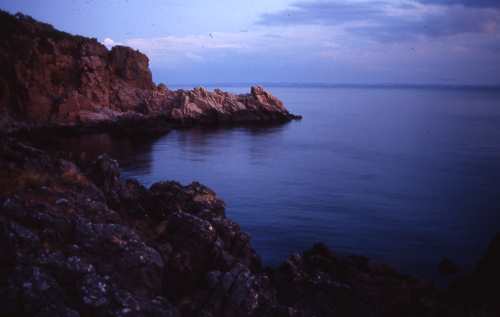
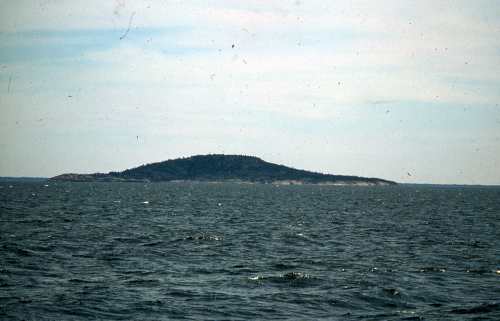
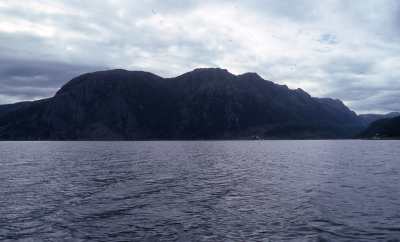
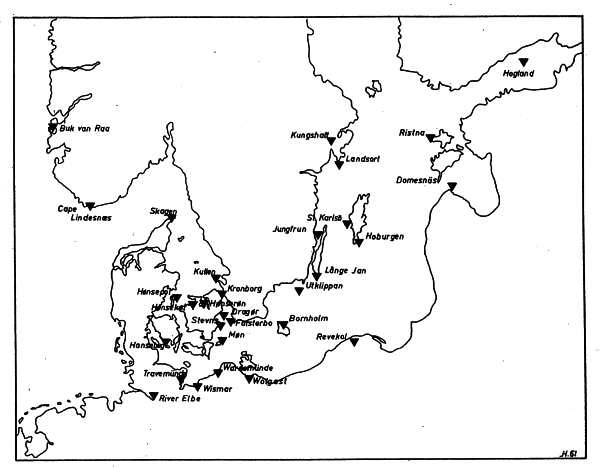
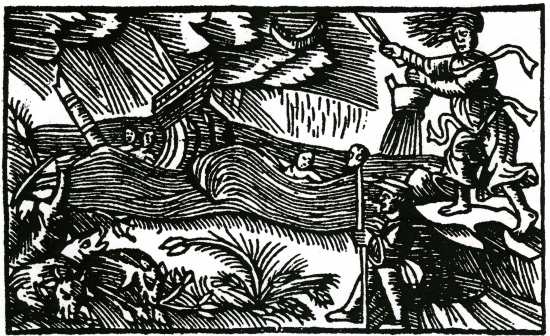
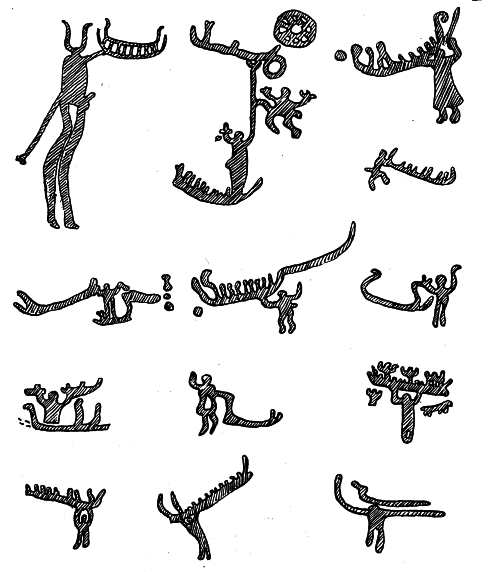
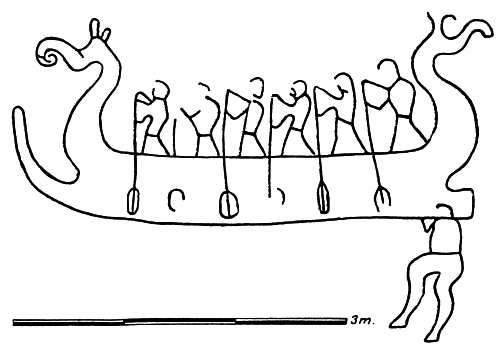
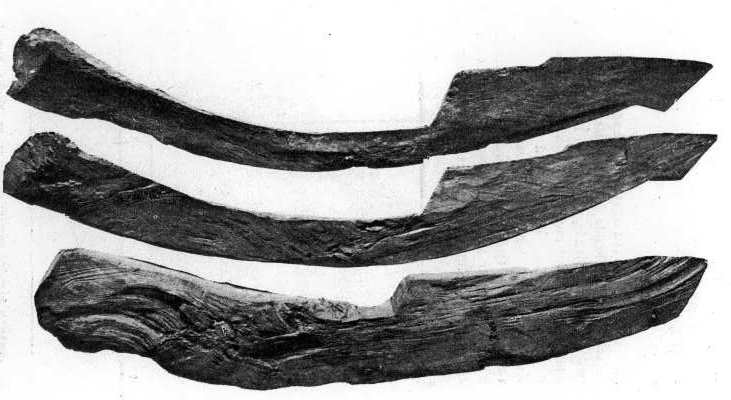
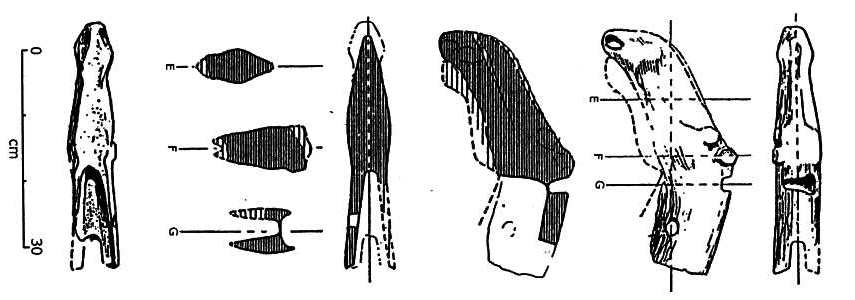
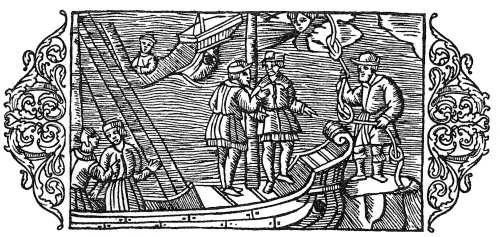
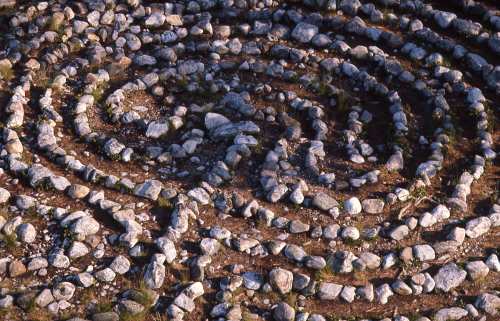
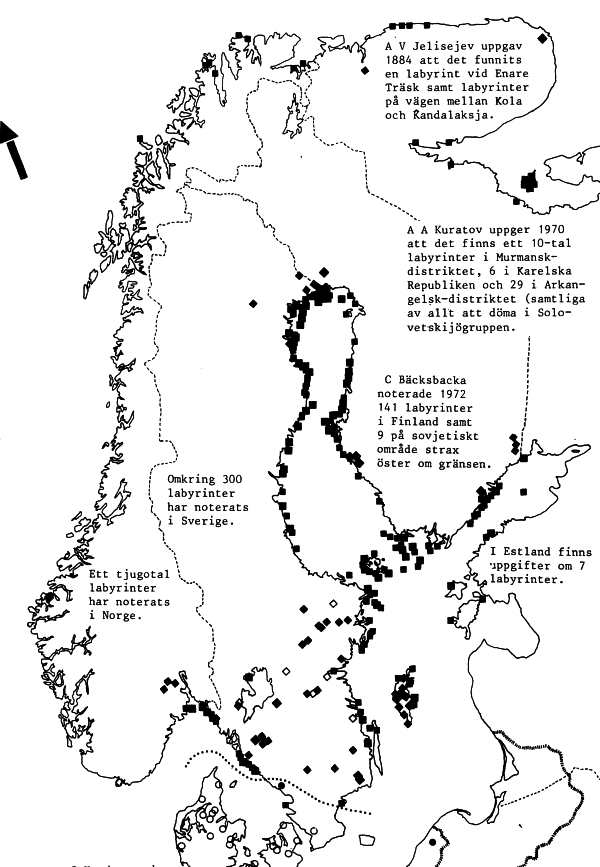
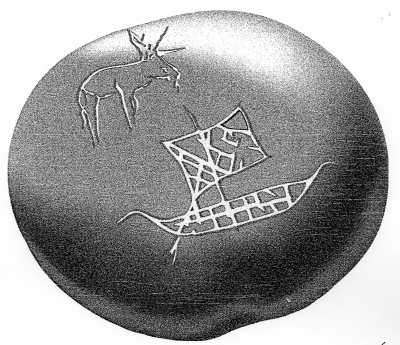
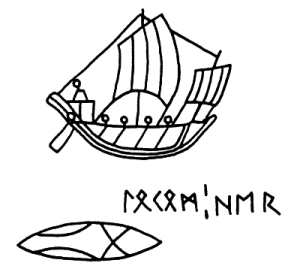
 Back to Nordic Underwater Archaeology
Back to Nordic Underwater Archaeology